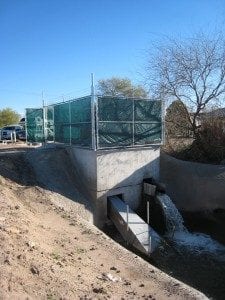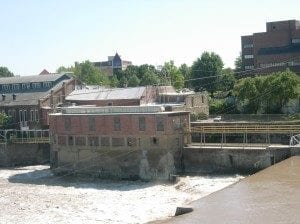Small hydro is a readily available technology that includes a wide range of projects spread across the U.S. In fact, records from the Federal Energy Regulatory Commission show that approximately 89% of our non-federal facilities have a capacity of less than 30 MW.
These smaller projects can capture energy from low-head stream flows or using existing dam or irrigation infrastructure. Installing small turbines in irrigation canals, water-treatment plant outfalls and existing hydroelectric facilities means projects often have little to no environmental impact.
Government support, critical to fostering these small hydro resources, includes research and development, continued tax incentives in support of renewable energy development, and enhanced intergovernmental cooperation in the federal licensing process. This environment will support the delivery of more clean, low-cost power to consumers. Learn more about the policies and incentives that support small hydro.
Project Highlight: Natel Buckeye South Extension Project
California-based Natel Energy Inc. completed the installation of its first commercial small hydro project last year. Located in Buckeye, Arizona, the project saw Natel partner with the Buckeye Water Conservation and Drainage District to install an SLH engine in one of the district’s canals.The SLH is a low head hydropower system made by 
Natel, which enables power generation from low head dams and, existing irrigation canals. “We have chosen to focus on the low head market because there are numerous settings in the U.S. where existing low head infrastructure could be retrofitted to capture energy that is currently wasted,” Natel’s co-founder, chairman and chief executive officer Gia Schneider, said in a hearing before the House Natural Resources committee in July 2010. Beyond being a low-impact technology, Schneider said, “we believe the potential exists to implement projects that both deliver renewable energy and create positive environmental co-benefits.”
The Buckeye project is currently being tested and will be connected to the grid once an agreement is reached with Arizona Public Service.
Read more of Schneider’s testimony here.
Project Highlight: Bowersock Mills & Power Company Expansion Project
For nearly 100 years, the Bowersock Mills & Power Company has been generating electricity from the Kaw (Kansas) River. The only operating hydroelectric plant in Kansas, Bowersock not only provides very important river flow and public water services to the city of Lawrence, KS, but generates 2.35 MW of power each year. The clean, renewable electricity produced by the plant’s seven generators flows into the electrical grid and is purchased by the Kansas Power Pool providing enough power for approximately 1,800 homes.
Recognizing the benefits this small hydropower facility brings to the surrounding communities and the state of Kansas, Bowersock is in the process of building a major $20 million addition to furnish power to the Kansas City (KS) Board of Public Utilities under a 25-year contract. The expansion will add four larger generating units that will produce an additional 5 MW of power. When fully operational, the project is expected to produce enough electricity to supply 3,300 homes, avoiding 44,000 tons of carbon dioxide emissions
The Bowersock Mills & Power Company remains privately-owned by the same family that started the company in 1874. Stephen Hill, who has run the company since 1972 and his daughter, Sarah Hill-Nelson, who joined in 2002, are Kansas business leaders carrying on a long tradition of bringing renewable hydropower to the local community. With a strong commitment to the environment and Kansas economy, Bowersock has been a small hydro success for over a century.


